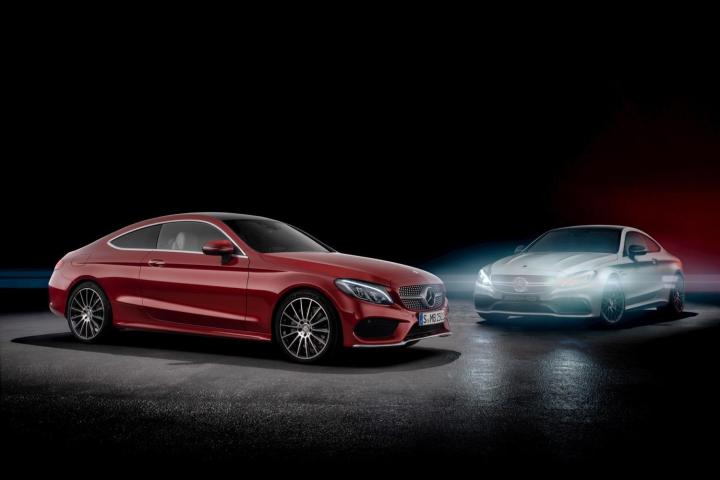
It may be parked behind the standard C-Class Coupe unveiled last week, and headlight shine may obscure some details, but this is the best look yet at the 2017 Mercedes-AMG C63 Coupe. Like other AMG models, it will feature amped-up styling to match the amped-up powertrain underneath the sheetmetal.
The biggest visual changes appear to include a new front fascia with gaping air intakes, larger fender flares, a hood with twin streaks that look like bulging veins, and larger wheels and tires. Of course, the transformation from regular C-Class to AMG C63 will be more than skin deep, though.
The coupe will almost certainly use the same 4.0-liter, twin-turbocharged V8 as the sedan. This engine, also shared with the AMG GT sports car, produces 469 horsepower and 479 pound-feet of torque in the “base” four-door C63, and 503 hp and 516 lb-ft in the C63 S model.
A seven-speed automatic transmission and rear-wheel drive will be part of the package, along with performance hardware such as a locking rear differential and adaptive suspension. Performance figures will have to wait for the C63 Coupe’s official unveiling, but the C63 S sedan can do 0 to 60 mph in just 3.9 seconds.
With two body styles available, Mercedes will be able to better compete with eternal rival BMW’s M3 and M4, as well as the Cadillac ATS-V. Both carmakers offer coupe and sedan versions of their small hot-rod luxury cars, and BMW offers an M4 convertible as well. The similarly-sized Lexus RC F coupe falls into this competitive set as well.
So when the Mercedes-AMG C63 Coupe arrives in U.S. showrooms next year, buyers will be offered not only with a choice of brand, but also whether to go for two doors or four.
Editors' Recommendations
- 2025 Mercedes-Benz G580: range, price, release date, and more
- Mercedes’ electric eSprinter isn’t just greener, it’s better
- Mercedes-AMG EQE SUV first drive review: a better electric SUV
- Mercedes-Benz brings ChatGPT voice control to its cars
- Mercedes-Benz Vision One-Eleven concept looks to the past for inspiration


